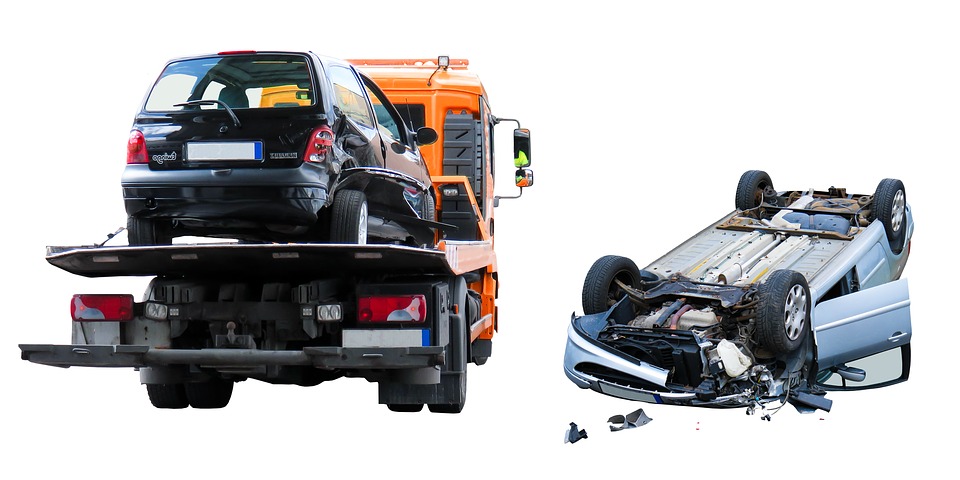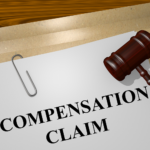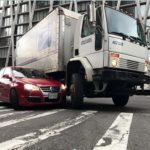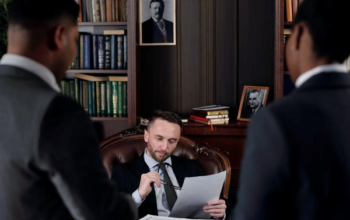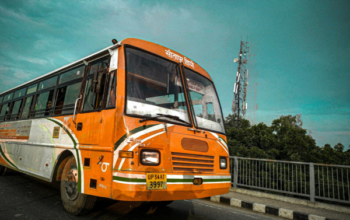Motor vehicles accidents are pretty common, and when they involve everyday drivers, there are rarely any issues. Insurance information is exchanged, pictures are taken, and the matter is held before a judge to see who was at fault if there is a dispute.
The same can’t be said for a driver who, while driving for his work, causes a motor vehicle accident. This is because there are more factors involved that can complicate the matter. This is due to the issue of liability: is the driver himself responsible or is it the fault of the company he works for? The answer to that question depends on a lot of other questions that need to be answered first.
The Basics
Under the theory of “Respondeat superior,” liability tends to hold the company responsible for any traffic accident that is caused by their driver-employee. This theory operates on the basis that an employer is liable for the actions of his employee, provided that they were not intentional and were committed within the scope of employment. A driver as an employee, of course, drives as part of his employment, so it stands to reason that a motor vehicle accident would naturally become the responsibility of the employer.
The reason for this is that employers tend to have deeper pockets than their employees so it’s much easier for them to pay compensation after injury. Employers have ways of protecting themselves, such as getting insurance to cover such costs.
This doesn’t mean that an employer is always going to be held liable, however. There are some mitigating factors that can shift the blame to someone else. We’re going to examine those now.
Employee or Independent Contractor
An employee is not treated the same as an independent contractor. An employee is a person whose actions are controlled by his employer and works on the schedule he’s been given. An independent contractor, on the other hand, is hired because of his area of expertise and knowledge and is given leeway to finish a job in any way he sees fit. The employer has less to no control over an independent contractor. In this light, employers are not held liable for the actions of an independent contractor. The injured person would have to seek compensation from the independent contractor in the matter of a motor vehicle accident.
If the difference between an employee and the independent contractor still isn’t clear, then there are ways to make it easier to decipher between the two.
- with an employee, the employer controls the means and methods of achieving the end results of the job; with an independent contractor, the employer is only interested in the end results so the methods are up to the contractor’s choice.
- an employer provides training, equipment, and tools to the employee; an employer does not provide any of these things to an independent contractor.
- the employer binds the employee through a contract to comply with laws and regulations; an independent contractor has an independent obligation to comply with laws and regulations.
- the employer provides a safety program to the employee and expects him to follow it; a contractor has an independent obligation to have and comply with the terms of a safety program.
- an employer withholds payroll taxes, and provides medical, dental, and retirement benefits; independent contractors are paid a lump sum for the job and are not provided with benefits of any kind.
Hopefully, it has been made a little clearer as to what the real differences are between employees and independent contractors.
The factor that needs to be considered next is the actions of the employee himself. Was he performing his contractual obligations or was he conducting personal matters?
What Defines “Within the Scope of Employment?”
Another factor in determining whether an employer can be held liable is whether the act committed took place within the scope of employment. Thankfully, there are a number of factors that courts take into account to determine what falls within this definition.
Some of the most common factors are what the intent of the employee was at the time of the accident, the nature, time, and place of the employee’s conduct, and the type of work that the employee was hired to do, for example.
So say, for example, that a driver rear-ends another car while making a delivery for his employer, then the latter would be liable for the damages and injuries involved. On the other hand, if the driver left early and drove his truck to a basketball game and has an accident, the employer would not be held liable. Going to a basketball game outside the time of working hours is not within the scope of employment because that was not what he was hired to do.
Intentional Actions
Here is where the rules are bent even more in favor of the employer. An employer is held responsible for unintentional actions of his employee, i.e. it must amount to an accident. However, if the actions of the employee were intentional in some way, then the employer is not held liable.
For example, a driver could drive his truck into another car because he’s discovered that a person was sleeping with their spouse. This is an intentional act. The employer is not held responsible because the commission of an intentional act such as this also falls outside the scope of the employment.
Acting Impaired
No employer expects someone to be drinking or being under the influence while they’re on the job. That’s why an employee who is drunk or high is made accountable for any damages that occur while he is in that state. This also goes for any incidents that involve lack of sleep or prior health conditions. Although employers may push their employees to finish jobs on time, especially ones that require traveling long distances, they expect their employees to exercise caution so that they’re not jeopardizing their safety during the course of employment.
Mitigation
So outside of these instances, is an employer always held liable? It depends on the case and what caused the accident. For example, if an accident was caused by the faulty brakes in the truck the employee was driving, the employer can try to mitigate his damages by pointing the blame at whoever does the maintenance on his vehicles. It was a problem they should have noticed and failed to do so.
Another example is the manufacturer of the vehicle. If it was created with a defect that no one knows about until an incident occurs. The manufacturer could be brought into the fold as well to offer compensation to the injured parties.
In the majority of cases, the employer is usually the last person that blame is shifted to unless one of the other scenarios mentioned above applies.
Owner of the Truck
What about in the case where there are three parties involved: the employer, the owner of the truck, and an employee? The employer could hire a third-party company to supply vehicles for the business, that is then operated by the employer’s employees. Who is held liable in that case?
It depends on how the accident occurred. If it involves some malfunction of the vehicle in some way, then the owner is most likely liable. This is because he had the responsibility and means to ensure that the vehicle was in working order, as well as keeping in maintained on a regular basis. In fact, there are federal regulations involved that govern the inspection and maintenance of these vehicles. Failure to do so not only incurs liability but there heavy fines can even be incurred as well for not adhering to these regulations.
What About Accidents Involved Cargo?
There are two people who could be involved in a motor vehicle accident is caused by the cargo in the vehicle. In one case, if the person loading the truck did not secure the cargo properly, then he would rightfully be held liable if the employer can prove it. But again, if the loader is another employee, then the blame would be shifted back to the employer.
The second case involves cargo that falls off the vehicle due to some defect in the vehicle itself. In this case, the manufacturer of the part that holds the cargo or the truck itself would be held liable for the accident. Again, the employer would have to prove the presence of the fault to shift the blame to the manufacturer.
Determining liability, as you can see, is a complicated process that requires a lot of checkboxes to be marked. This can make it easy to sort out or require a little more time to determine who is responsible at the end of the day. But to understand it more easily, the employer is usually at the top of the totem pole when it comes to liability, and it is then his responsibility to prove why someone else should be held responsible for the incident.
Related Posts

